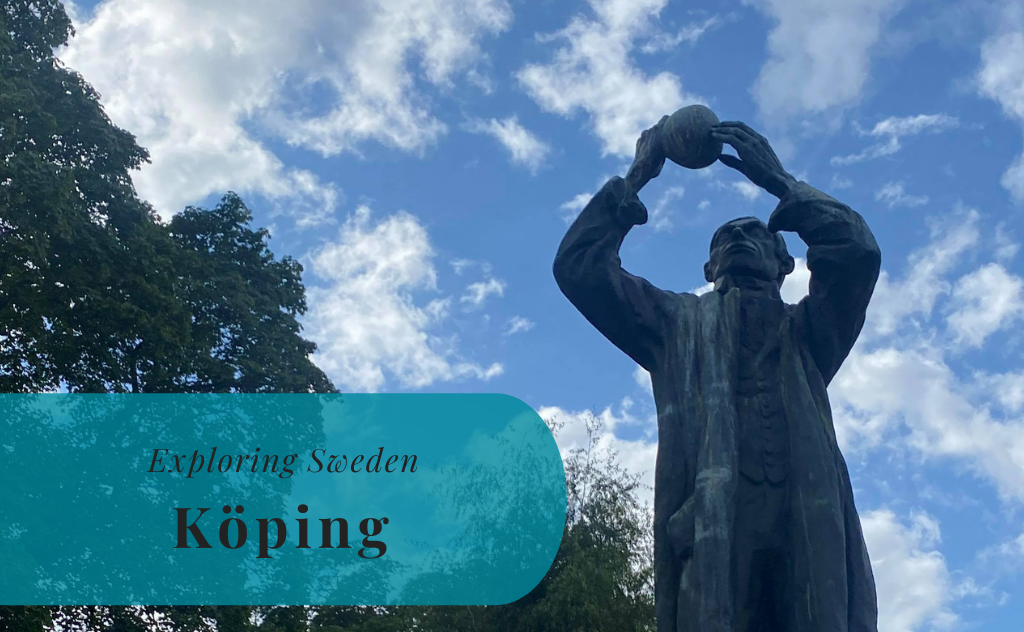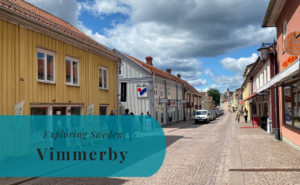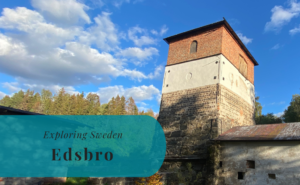Köping is an industrial town in the province of Västmanland, right along the shores of the Köping River and with a port at Lake Mälaren. The population of around 18.700 inhabitants has a long history of working within manufacturing, with companies such as Volvo, GKN, and Yara established in the town. It is also home to the Hästens, the bed manufacturer, that was founded here in 1852.



A Short History of Köping
The first known mentioning of Köping dates back to the mid-13th century. It was earlier known as Laglösaköping, pointing towards a market town but the other part of the name has an unknown origin. “Laglösa” means “lawless” in English.
Köpingshus and the Lack of a Castle
Köping had a castle or stronghold as far back as the 14th century. It was, however, destroyed during the revolts in the first half of the 15th century. A few more decades passed before Köping received its town privileges and became a town in 1474. It took even more time until the 1580s before any attempt to rebuilt what was known as Köpingshus took place. The project was never completed and Köpingshus was still in ruins during the 17th century and was eventually completely erased when the railway was built.
Iron Exports from Bergslagen
Köping’s development sped up during the 16th and 17th centuries. This was a time when it was one of the export ports for iron from the mines in Bergslagen. Its location along the shores of Lake Mälaren meant that ships had uninterrupted access from the Baltic Sea.
Further Expansion and Industrialization
In the 18th century, production in Köping included mostly wool and knitwear. The 19th century first saw the addition of Köpings Mekaniska Verkstad in 1856. It specialized in the production and repair of machinery and is today a part of Volvo Powertrain. The railway to Arboga was completed in 1867 pushing the industrialization of Köping.
Fires and an Explosion
Little remains from the town of 1889 and before, this was the year when most of the town was destroyed by a fire. The fire devastated 92 buildings and left around 650 people homeless. A 10-year-old boy became accused of starting the fire and ended up in an institution.
Köping was also the location of a gas explosion in 1976. A warehouse that stored around 150 gas bottles caught fire and even though attempts were made to stop it, there was an explotson. They even used guns to puncture gas bottles to prevent an explosion, but eventually, around 70 bottles exploded causing limited destruction.



Things to Do and See
With plenty of parks and nature areas, the outdoors is always accessible. Then there are the historical sights and the town in itself to enjoy. The center does not only house many of the older buildings, but also restaurants, cafés, small shops, and shopping centers.
Köping Museum
Köping Museum was founded in 1887 and is today housed in the brewery from the 18th century. It tells the stories of the past, how life once was here. There is also information about the pharmacist Carl Wilhelm Scheele, who was active in Köping from 1775 to 1786.
Ströbohög
Right next to highway E4 is the large burial mound Ströbohög. The top today towers 10 meters above the surrounding fields and has a diameter of 35 meters. The theories and beliefs about the mound are many. One theory is that it could be the legendary king Anund who is buried here or that it was a giant that made a stop on his journey. The story has it that the giant made the mound by mistake when trying to cover the church with sand to make its clock go quiet so he could rest.
Köping Church
The current church in Köping was opened in 1706 after extensive reconstructions. There has been a church here since the 14th century, at a time when the name of the church was Jämmertuna Church.
At the foot of the hill, where the church is located, is the Scheele Park in memory of the pharmacist Carl Wilhelm Scheele.
Köping Town Hall
Köping Town Hall was completed in 1877 and was designed by the architect Johan Adolf Haverman. Its current appearance mostly dates back to the restoration of the 1920s. The building is since the 1970s home to many of the municipality’s functions.
Köping Courthouse
The courthouse was completed in 1893. It was designed by the architect Theodor Dahl and was used as a courthouse until 2019.
KVM Factory Buildings
KVM , or Köping Mekaniska Verkstad, was established in 1856 and has since grown and expanded. Most of the buildings around the factory date back to the second half of the 19th century and early 20th century.





How to Get to Köping
- Flights: The closest airport is Stockholm Västerås Airport (VST), 46 kilometers away, which has mostly low-cost carriers. In addition, there is Stockholm-Arlanda Airport, 146 kilometers away with both domestic and international flights.
- Car: Köping is along E18 between Örebro and Västerås.
- Bus: Local and regional buses from VL connect Köping with the surrounding region.
- Train: SJ has trains to Köping from and to towns such as Gothenburg, Hallsberg, Stockholm, and Västerås.
The driving distance from 5 major Swedish cities, according to Google Maps:
- Stockholm – 147 kilometers (1h 40min)
- Gothenburg – 352 kilometers (4h 17min)
- Malmö – 566 kilometers (6h 7min)
- Linköping – 158 kilometers (2h 1min)
- Kiruna – 1245 kilometers (14h 40min)
Find out more about other destinations in Sweden by visiting our page Exploring Sweden






